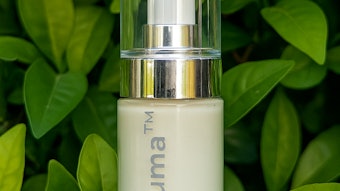I have the OTR Stream app on my iPhone. It’s a library of radio shows from the 1930s–1950s that you can then stream, and I fall asleep to old Westerns and listen to comedies to keep my sanity as I rehab my 60-year-old home.
As I was cursing my way through yet another touch-up coat of paint to crown molding late last fall, a program called Duffy’s Tavern played in my ear buds, specifically the “Most Popular Bartender on 3rd Avenue” episode (originally aired on May 18, 1949). On many of these radio programs, commercials were live, and the attempts by Archie, Duffy’s bartender, to scam votes for most popular bartender was interrupted by the announcer hawking a deodorant that was “safe.” My flow of invectives momentarily ceased. I thought marketing with claims like “safe” in personal care were a relatively new phenomenon, but it turns out that’s been done since before the damnable crown molding was hung.
It’s an innocuous word, and I’m not arguing a brand should or should not use it as part of its claims, but I do note that innocent statements can be easily appropriated, used to refute the claim itself and provide fuel for those looking to stoke the fires of an agenda.
About the same time as my battle with the crown molding, an NGO-released PR with a headline that stated a well-known baby care brand owner promised to remove carcinogens from its products, and the carefully crafted inflammatory headline was followed with a note that health groups applauded the move. In response, a non-beauty industry Facebook friend of mine posted: “Not the first time I heard this but always amazing. This famous baby shampoo has always contained toxic chemicals,” with a link to a story that focused on the hyperbole and shock of the story value while neglecting to provide any depth on the topic so that reasonable people could be actually well-informed about the products and not simply freaked out.
I commented on the post with background and a little bit of the science GCI and sister publications Cosmetics & Toiletries and Perfumer & Flavorist have reported. I found out discussing the topic on Facebook is akin to discussing religion or politics at a cocktail party. It’s an ugly conversation that gets heated because, when someone fervently believes or wants to believe something, there’s no interest in understanding anything beyond what’s already been chosen to believe.
My response about perceived and real “dangers” prompted someone else to post: “Are you okay with toxins being added to our products ... as long as its within legal limits and not brought to the attention of the consumer?”
“Hard to understand the preventive logic that put [the ingredients cited in the PR] there in the first place,” the original poster responded. “Glad to see [the brand owner] address it with this new line but reluctant to help them make more money since they probably wouldn’t have changed anything without consumer demand.”
I realized what a difficult thing this is for companies to face—and I’m not sure they can turn a topic in their favor with those who are only interested in shouting their narrowly defined opinions/beliefs/agendas as loudly as possible. In the end, in this case, the brand owner tried to do what it felt was the right and smart thing to do (regardless of whether it had any culpability in wrong doing in the first place), but it turns out it couldn’t win regardless. And in the bigger picture, the entire industry loses.
As a colleague noted, a class of ingredient components, beyond the one chemical indicted by the NGO, may have been unilaterally thrown under the bus. In this case, too, a technical editor pointed out, the chemical in the product was, in fact, not even chemically related with those with which it was being grouped and that are actually harmful, and we lamented that agenda-driven groups may now be able to point to this brand’s move to indict others.










